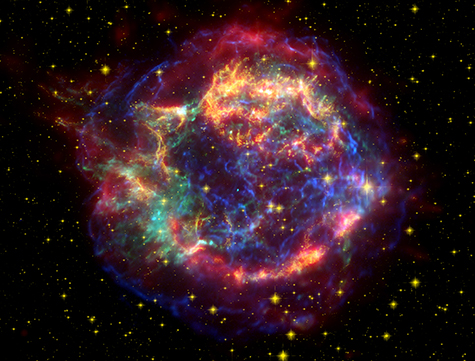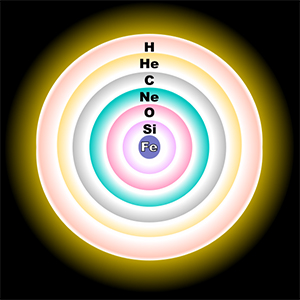Solar System Genesis Meteorite Grains
Hey Space Placers!
Current theory holds that the Sun and solar system were created when a nearby supernova shockwave began the collapse of our gas and dust nebula. As the proto-solar nebula continued to collapse the Sun eventually began nuclear fusion to become a star and the proto-planets became full fledged planets with asteroids and comets marking the original materials of our solar system.

In our studies of meteorites, we have found grains within certain space rocks that were older than the solar system itself. The only way to explain this is to consider that grains of material from other stars must have been part of our original nebula. This makes perfect sense when we see the remnants of supernovas seeding space with the elements created while the star was alive and in its fearsome death throes.
These elements would seed other nebulas with all of the elements that are lighter and heavier than iron. That is why our planet has gold, silver, uranium and titanium for example, because they were made in a supernova explosion, propelled out into space and seeded our nebula. When the Earth formed over a long period of time all of the elements that were in the countless planetesimals (space rocks or asteroids) that collided with our ever growing planet became part of Earth.
Current studies of two meteorites have found a grain of silica (the main component of sand) in each that share the same chemical properties. The only way this could happen would be for these grains to have a common source - a nearby supernova event. The presence of silica is of great interest because it is thought to be formed just before a star dies as a supernova. The star tries to survive by burning whatever it can in a runaway fusion process which forms an onion skin layer of elements before the fatal core of iron shuts down fusion and the star collapses and explodes.

With the unique chemical properties these silica grains had the scientists were able to model conditions that must have been present in the soon to be supernova star to form them. And for TWO meteorites to have these same unique chemical properties present in each, well, that is pretty amazing.
More meteorites will be examined to see if additional grains are found. Read More About It:
https://news.wustl.edu/news/Pages/25306.aspx
Sky Guy in VA
Current theory holds that the Sun and solar system were created when a nearby supernova shockwave began the collapse of our gas and dust nebula. As the proto-solar nebula continued to collapse the Sun eventually began nuclear fusion to become a star and the proto-planets became full fledged planets with asteroids and comets marking the original materials of our solar system.

NASA/JPL-CALTECH/ O. KRAUSE (STEWARD OBSERVATORY)
In 2007 NASA’s Spitzer space telescope found the infrared signature of silica (sand) in the supernova remnant Cassiopeia A. The light from this exploding star first reached Earth in the 1600s. The cyan dot just off center is all that remains of the star that exploded.
In our studies of meteorites, we have found grains within certain space rocks that were older than the solar system itself. The only way to explain this is to consider that grains of material from other stars must have been part of our original nebula. This makes perfect sense when we see the remnants of supernovas seeding space with the elements created while the star was alive and in its fearsome death throes.
These elements would seed other nebulas with all of the elements that are lighter and heavier than iron. That is why our planet has gold, silver, uranium and titanium for example, because they were made in a supernova explosion, propelled out into space and seeded our nebula. When the Earth formed over a long period of time all of the elements that were in the countless planetesimals (space rocks or asteroids) that collided with our ever growing planet became part of Earth.
Current studies of two meteorites have found a grain of silica (the main component of sand) in each that share the same chemical properties. The only way this could happen would be for these grains to have a common source - a nearby supernova event. The presence of silica is of great interest because it is thought to be formed just before a star dies as a supernova. The star tries to survive by burning whatever it can in a runaway fusion process which forms an onion skin layer of elements before the fatal core of iron shuts down fusion and the star collapses and explodes.

WIKIMEDIA COMMONS
A massive star that will explode at the end of its life, a core-collapse supernova has a layered structure rather like that of an onion.
With the unique chemical properties these silica grains had the scientists were able to model conditions that must have been present in the soon to be supernova star to form them. And for TWO meteorites to have these same unique chemical properties present in each, well, that is pretty amazing.
More meteorites will be examined to see if additional grains are found. Read More About It:
https://news.wustl.edu/news/Pages/25306.aspx
Sky Guy in VA

Comments
Post a Comment